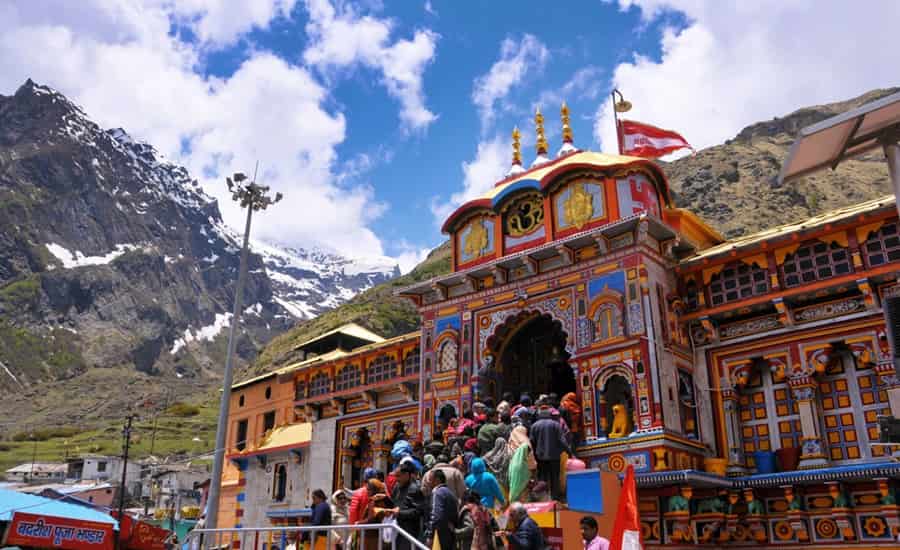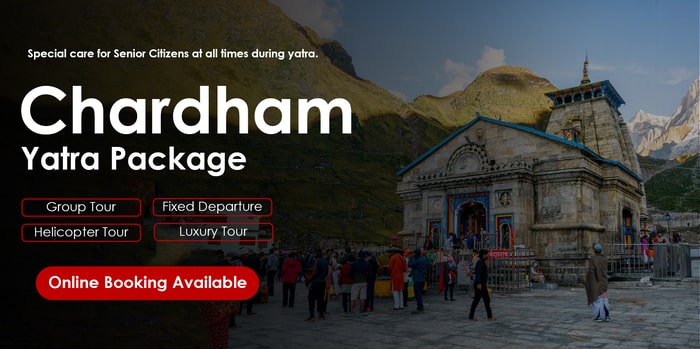Last Updated on April 11, 2025
Badrinath Dham is nestled amidst Nar and Narayan mountain ranges. As a pilgrim you need a proper plan to execute your Badrinath Dham Yatra successfully. The challenging geography makes it extremely difficult to do Badrinath Yatra without advanced planning. This guide will help you to plan your Badrinath Dham Yatra.

About Badrinath- Abode of Lord Vishnu
Nestled amidst the stunning Chamoli district of Uttarakhand between Nar and Narayan mountain ranges, Badrinath Dham is one of the holiest pilgrimage destinations for Hindu devotees. It is also known as Badri Vishal. Located at an elevation of 3,133 meters above the sea level, the town of Badrinath holds immense value for Hindus. It has kept the age old traditions, culture and customs alive. Strong faith of devotees and willingness to endure difficult journey compels them to visit Badrinath from all over India.
Important Things to Know before Planning Badrinath Yatra 2025
| Badrinath Temple |
Details |
| Location |
Chamoli District, Uttarakhand |
| Presiding Deity |
Lord Vishnu |
| Best Months to Visit |
May-June, September to October |
| Opening Date of Badrinath Temple 2025 |
4th May 2025 |
Weather and Best Time to Visit
Badrinath experiences extreme weather conditions due to its challenging geography.
- In Summer May- June, you can visit Badrinath Dham with your loved ones to enjoy a smooth pilgrimage experience. The weather is quite pleasant during this time to enjoy sightseeing and take part in Pooja rituals.
- Winters make the road to Badrinath Dham inaccessible due to heavy snowfall. The temperature ranges up to sub-zero degrees.
- Monsoon season (July to September) brings heavy rainfall which can cause landslides, floods and road closures. It is advisable to avoid visiting Badrinath during monsoon.
- Post Monsoon (September-October) – It is also one of the best months to visit Badrinath Dham. There will be less crowd for darshan. You can rejuvenate your mind, body and soul in the lap of nature.
How to Reach Badrinath Dham
- By Road: Badrinath has good road connectivity. You can easily reach Badrinath from major cities. There will be buses at Haridwar or Rishikesh at regular intervals. The road trip will take 10-12 hours but you will enjoy the journey.
- By Rail: Rishikesh or Haridwar serves as the nearest railway station to Badrinath. From station you will get bus, cab or taxi to reach Badrinath Dham.
- By Air: Jolly Grant Airport in Dehradun stands as the nearest airport to Badrinath, You will get flight from major cities to Dehradun to reach Badrinath Dham.
Helicopter Service for Badrinath Yatra
If you want to save your time and don’t want to do physical effort, you can opt for Badrinath Dham Helicopter Service. The helicopter will lead to Badrinath Dham in few hours. You need to book Helicopter tickets for Badrinath Dham in advance from the official website of Heli yatra by IRCTC.
Route for Badrinath Dham
- Your Badrinath yatra will start from Haridwar or Rishikesh as these two places serves as the gateway to reach Badrinath Dham.
- En route, travelers will come across villages such as Devprayag, Rudraprayag, Karnaprayag, Nandprayag, and Joshimath. Joshimath is the last stop that comes before Badrinath Dham.
- From Joshimath, You will reach the divine abode of Badrinath, nestled amidst the Nar and Narayan mountain ranges.
Things to Do in and around Badrinath
- Visit the Badrinath Temple: Visit Badri Vishal aka Badrinath Temple to get the divine blessings and positive vibes.
- Take a Dip in the Tapt Kund: Take a holy dip at Tapt Kund. It’s a hot water spring with medicinal properties.
- Explore Mana Village: Explore Mana Village, the last Indian settlement before the Indo-Tibetan border. It is one of the most beautiful Himalayan village and declared as Tourism Village by Uttarakhand Government.
- Visit Vasudhara Falls: In Vasudhara falls the water falls from the height of 400 ft. It is one of the most beautiful cascading waterfalls amidst the serene lap of Himalayas.
- Hemkund Sahib– It is a popular Sikh pilgrimage shrine located in Himalayas. It’s a must visit place due its spiritual heritage, serene surroundings and click worthy landscapes.
Best Places to Stay in Badrinath
- New Hotel Snow Crest– It has good spacious rooms, and a 24 hours front desk and free Wi-Fi services. You will get all the basic facilities to enrich your Badrinath Dham pilgrimage tour.
- Sarovar portico Badrinath- It is located at 10 km walking distance from Badrinath Dham. The rooms showcase beautiful Himalayan views. You will get all the arrangements done for Temple Darshan.
- Badri Vishal Guest House: Located in the heart of Badrinath town, Badri Vishal Guest House is one of the best stay places in Badrinath. The staff is friendly and you will get all the basic facilities.
- Hotel Panchvati Inn- It is located near most popular places in Badrinath. You will get clean rooms with all the basic facilities.
What to Eat in Badrinath
Badrinath is a beautiful spiritual town. The food options you will get is vegetarian. Here are some of the popular dishes to try in Badrinath.
- Phanu– Phanu is a wholesome soup made of various type of lentils which are soaked overnight.
- Aloo Ke Guthke– It’s a delicious Kumauni dish of potato tossed in local Himalayan herbs and spices.
- Temple Prasad– After offering prayers in Badrinath, you can partake in Prasad of Badrinath Dham which consists of Khichdi (rice and lentil dish). It’s not considered in the list of popular items as it’s a sacred Prasad of Lord Vishnu.
- Kafuli– you can also try Kafuli which is one of the most popular dish of this region. It is made of spinach or fenugreek leaves and is cooked with spices to create a thick gravy. It is served with rice.
Travel Tips
- When you visit religious sites at Badrinath follow the sacred customs by dressing modestly with respect.
- Additional warm clothes should be packed since winter pilgrims will need protection from the cold mountain temperatures.
- Your journey should include food supplies and water because the route lacks many eating options.
- Visitors must keep the pilgrimage area pure by avoiding all types of littering and damage to the environment.
Final words
The Badrinath Yatra requires careful organization combined with genuine respect for the place’s cultural traditions. To experience a beautiful journey full of spiritual depth and natural beauty travelers should follow the instructions in this guide.
Posted by
Garima Sachdeva is a creative content writer with 4 years of experience, known for her versatile writing style and ability to simplify complex topics. She specializes in SEO-optimized content, blogs, and articles that inform and engage. With a passion for storytelling, Garima brings fresh perspectives to every project she undertakes.




 Call
Call Enquiry
Enquiry